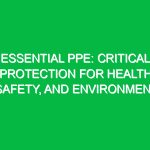# Stay Safe on the Road: Fixed Objects and Motor Vehicle Safety Tips
Hello team, and welcome to today’s Toolbox Talk focusing on “Fixed Objects and Motor Vehicle Safety.” Today, we will discuss essential tips and best practices to ensure your safety on the road and around fixed objects while operating motor vehicles.
## Importance of Motor Vehicle Safety
Motor vehicle safety is a critical aspect of our daily operations, especially when working around fixed objects. As employees, it is vital to understand the risks associated with driving and how to mitigate them effectively. By prioritizing safety on the road, we not only protect ourselves but also our colleagues and the company’s assets.
## Understanding Fixed Objects
Fixed objects refer to stationary structures or obstacles that can pose a hazard to vehicles and pedestrians. These may include utility poles, guardrails, concrete barriers, buildings, or any other immovable objects along roadways or work areas. It is essential to be aware of these fixed objects to prevent accidents and ensure safe navigation.
## Potential Hazards and Risks
Driving near fixed objects presents specific risks that must be addressed to avoid accidents. Collisions with fixed objects can result in serious injuries or fatalities, making it crucial to identify potential hazards and take preventive measures. Some common risks include limited visibility, narrow roadways, distractions, and slippery surfaces, among others.
## Best Practices for Motor Vehicle Safety
To enhance motor vehicle safety and minimize the risks associated with fixed objects, consider implementing the following best practices:
1. **Maintain Proper Distance**: Always maintain a safe distance between your vehicle and fixed objects to prevent collisions. Be mindful of blind spots and adjust your speed accordingly.
2. **Observe Speed Limits**: Adhere to posted speed limits, especially in areas with fixed objects or limited visibility. Speeding increases the likelihood of accidents and reduces your reaction time.
3. **Use Turn Signals**: Signal your intentions early when approaching fixed objects or making turns to alert other drivers and pedestrians. Clear communication can prevent misunderstandings and potential accidents.
4. **Avoid Distractions**: Stay focused on the road and avoid distractions such as texting, phone calls, or eating while driving. Distractions impair your ability to react quickly to unexpected situations.
5. **Check Mirrors Regularly**: Monitor your surroundings by checking your mirrors regularly to be aware of nearby fixed objects, vehicles, or pedestrians. Proper visibility is essential for safe driving.
6. **Follow Traffic Signs**: Obey all traffic signs, signals, and road markings to navigate safely around fixed objects and intersections. Ignoring traffic regulations can lead to accidents and legal consequences.
## Real-Life Scenarios
Imagine driving on a narrow road with utility poles lining the sides. In this scenario, maintaining a safe distance from the poles is crucial to avoid side-swiping accidents. By being alert and observant, you can navigate such challenging environments safely and prevent collisions with fixed objects.
## Compliance with Regulations
It is essential to comply with relevant regulations, standards, and company policies related to motor vehicle safety and fixed objects. By following established guidelines, you contribute to a safe working environment and uphold legal obligations that protect everyone involved.
## Conclusion
In conclusion, prioritizing motor vehicle safety and being mindful of fixed objects are key to preventing accidents and promoting a secure work environment. By implementing the best practices discussed today, you can reduce risks, protect yourself and others, and ensure a smooth and safe driving experience.
Thank you for your attention during this Toolbox Talk, and remember, safety is everyone’s responsibility. Stay safe on the road, be aware of fixed objects, and drive with caution. Your commitment to safety is appreciated and valued. Let’s work together to make every journey a safe one. Stay safe out there!


